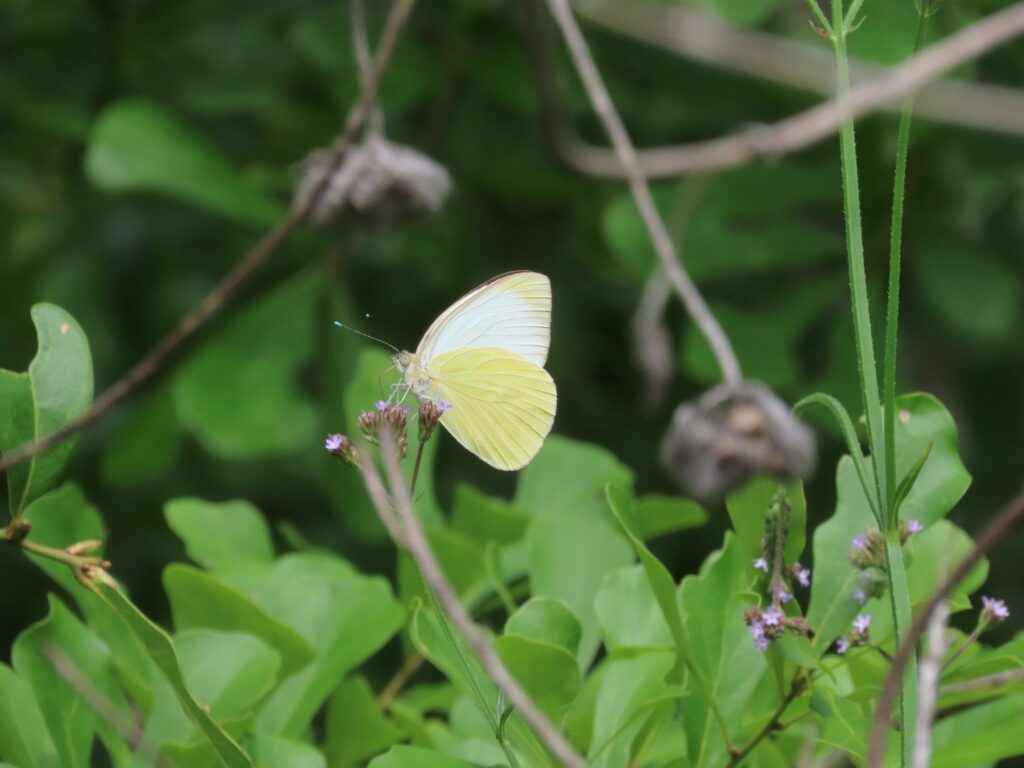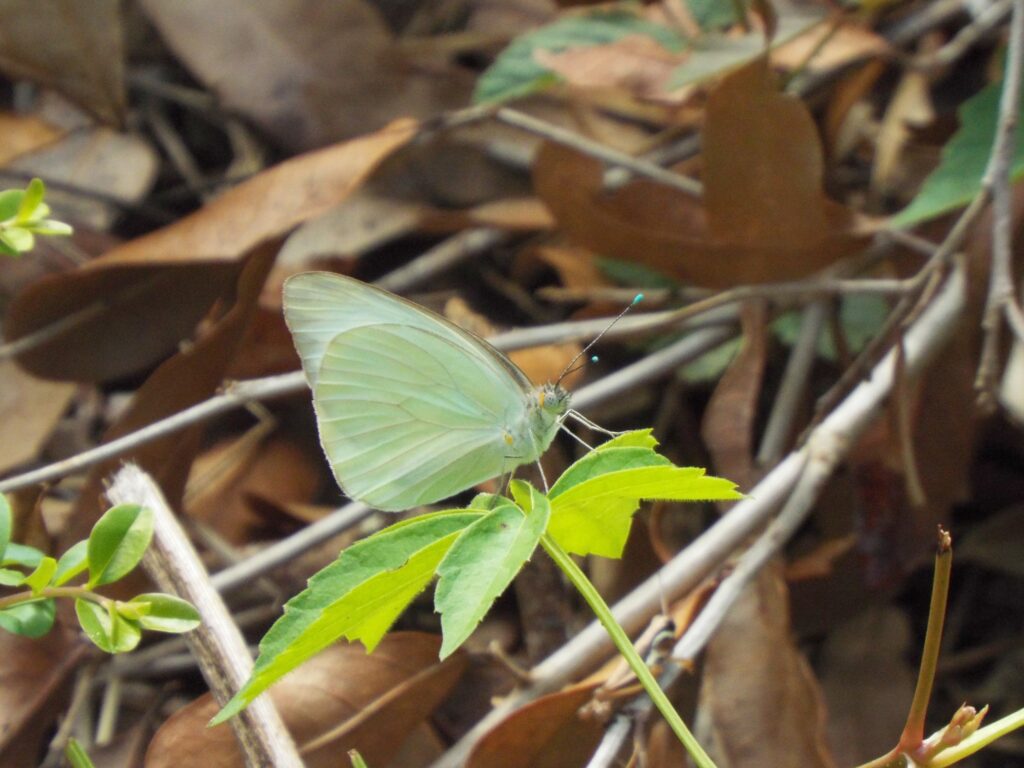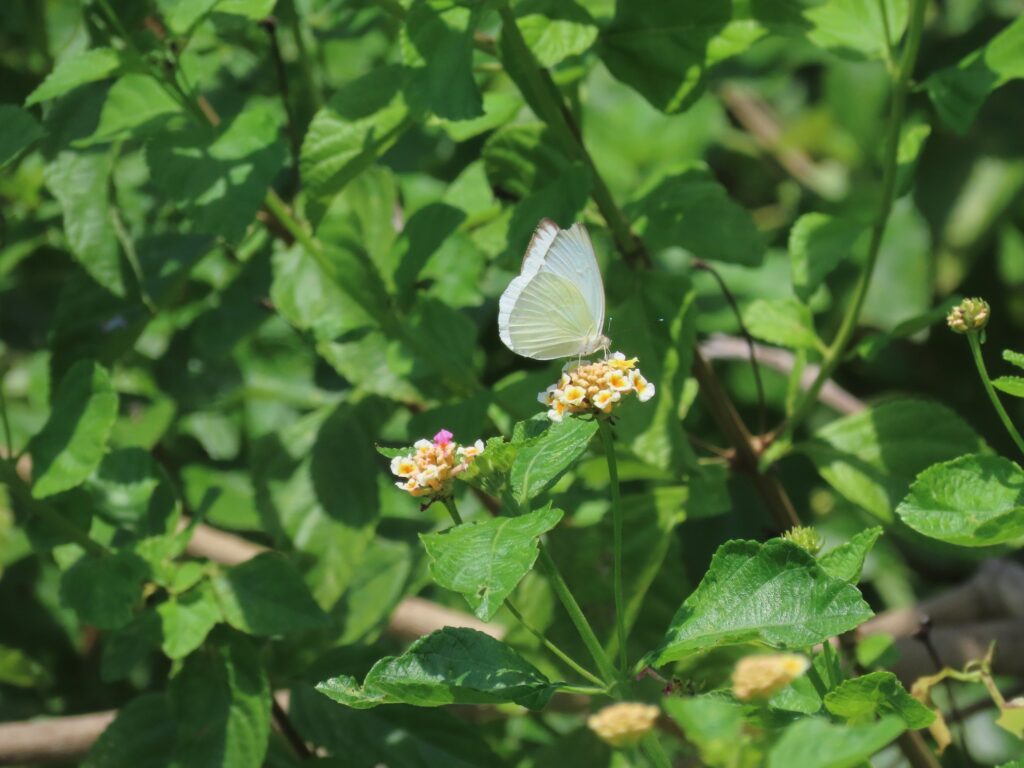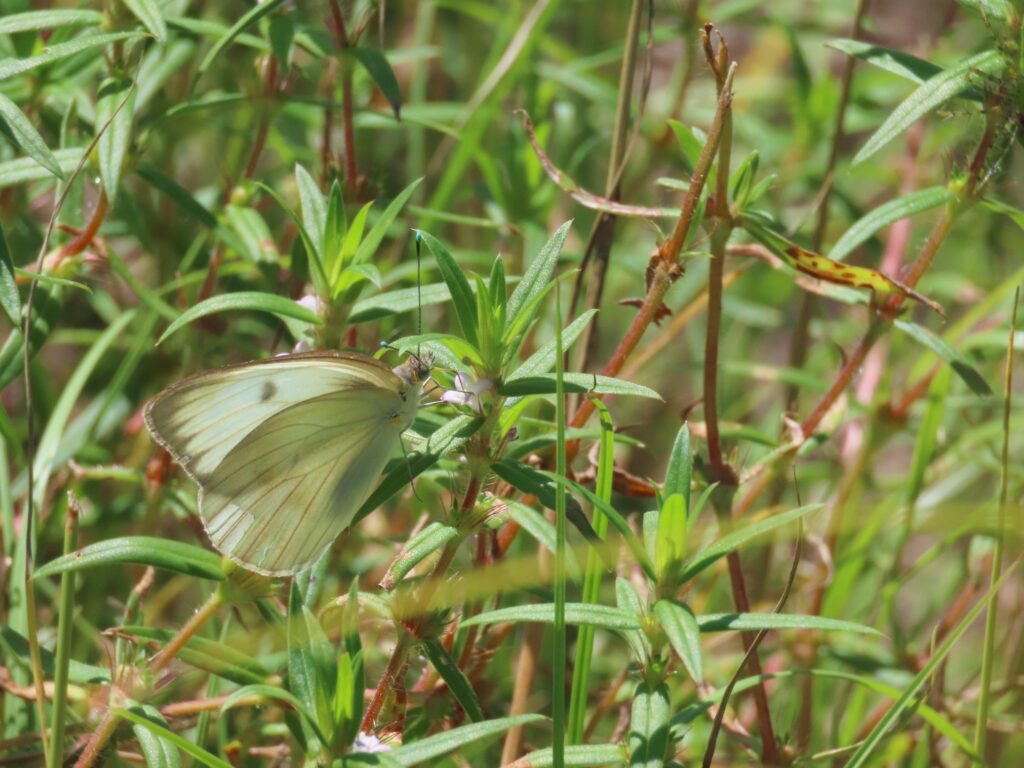




This week for Flora and Fauna Friday, we have a tropical butterfly that’s making itself a home here on Edisto Island, the Great Southern White (Ascia monuste).
The Great Southern White is a medium-sized butterfly, triangular in profile and about an inch-and-a-half tall. It belongs to the Pieridae family, kin to the larger Sulphurs, smaller Yellows, and mid-sized Oranges and other Whites. The male Great Southern White’s wings and body are a clean cream-white with a smoky-gray leading edge. Females are often the same but may darken their wing veins with a graphite-gray haze. In flight, both sexes show a dark leading edge to their forewings. Yet, their most standout feature is the neon-turquoise clubs at the tips of their antennae, which distinguish this butterfly from the Cabbage White (Pieris rapae) and Checkered White (Pontia protodice). Great Southern White caterpillars feed on plants in the cabbage family, Brassicaceae, particularly Virginia Pepperweed (Lepidium virginicum) in our uplands and Saltwort (Batis maritima) in our high salt marshes.
The Great Southern White is both a tropical and a coastal species, ranging across the coasts of Central America, the Caribbean, all along the Gulf Coast, and throughout Florida, drifting north into coastal Georgia and South Carolina later in the year. Like many of the tropical butterfly species that call Florida home, to include Gulf Fritillaries, Long-tailed Skippers, and Zebra Longwings, the Great Southern White’s abundance here in South Carolina is dependent on how good of a spring and summer they had in Florida. If their populations there boom, we see a glut of tropical butterfly migrants on the Sea Islands in late summer. But even in a good year, they are a rare butterfly here in South Carolina and a species that is a special sight for us to see. However, I’ve noticed a strange abundance and prevalence of Great Southern White on Edisto Island in recent years. Since I started working for the Edisto Island Open Land Trust in 2017, there have always been Great Southern Whites fluttering about the meadows of the Hutchinson House and down the scenic corridor of Point of Pines Road. Every summer they appear, and not just single butterflies, but multiples, with males patrolling territories as they circle incessantly, rather than migrating north. The curious thing is that these butterflies are fresh as a daisy, richly colored and not one nick in their wings. That’s a bit odd for something the size of a Ritz cracker that just flew across dozens of rivers, down hundreds of roads, and through untold thunderstorms during its two-hundred mile trip up from Florida! Pretty quickly I realized that this was a resident population of Great Southern Whites, the first one known from the Carolinas. From there I pieced together that the adult butterflies relied on the wildflower meadows at the Hutchinson House for nectar and their caterpillars were being raised on the vast expanses of Saltwort growing in the hard marshes within the upper reaches of Ocella Creek, between Botany Bay and Point of Pines Road. I’ve seen this species seven years running now at the Hutchinson House and hope 2024 will be our eighth! Last year, I saw evidence that this species may also be established in Port Royal Sound. Who knows, in a decade they me be as common across the Sea Islands!